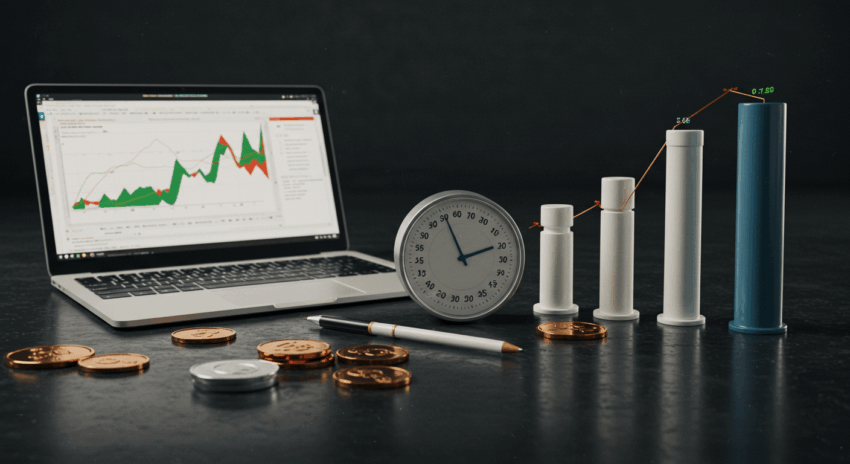Consumer confidence just delivered an unexpected twist in the ongoing economic narrative. After months of decline, the mood of the American household has suddenly brightened, leaving many analysts and everyday citizens wondering what this shift truly means for their wallets and the nation’s financial future. This isn’t just a feel-good headline; it’s a critical piece of data that can influence everything from the price of your groceries to the interest rate on your next loan. In this article, we’ll break down exactly what this resurgence in confidence means, why it matters so much, and how it could impact your personal financial strategy.
Decoding Consumer Confidence: The Economy’s Mood Ring
Before we dive into the latest numbers, let’s clarify what consumer confidence actually is. Think of it as the economy’s collective mood ring. It’s a measurement of how optimistic or pessimistic households are about their own financial situation and the health of the economy as a whole. It’s not based on hard data like GDP or unemployment numbers, but rather on perception and feeling—which, as it turns out, is an incredibly powerful economic force.
This sentiment is typically captured through large-scale monthly surveys. One of the most-watched is the Conference Board’s Consumer Confidence Index. Researchers ask thousands of households questions about:
- Current Conditions: How they feel about the current state of business and the job market.
- Future Expectations: What they anticipate for business, jobs, and their own income in the next six months.
The answers are then compiled into a single index number. A higher number indicates more optimism, while a lower number signals growing pessimism. This simple figure provides a snapshot of the psychological state of the consumer, the single biggest driver of the U.S. economy.
The Latest Numbers: A Surprising Spring Rebound
After three consecutive months of decline, the Consumer Confidence Index unexpectedly jumped in May. The index rose to 102.0, up from a revised 97.5 in April. This rebound surpassed the expectations of most economists, who had predicted another slight dip.
So, what fueled this sudden burst of optimism? The data shows the improvement was largely driven by a more positive view of the present. More people reported that current business conditions were good and felt more secure about the labor market, with fewer respondents claiming that jobs are “hard to get.”
However, the picture isn’t entirely rosy. While people feel better about the here-and-now, their expectations for the future remain somewhat subdued. Concerns about inflation continue to loom large, and perceptions of a potential recession down the road, though diminished, have not vanished. This creates a complex picture: we feel more secure today, but we’re still cautious about tomorrow.

Why This Survey Has Such a Powerful Ripple Effect
It’s easy to dismiss a survey about “feelings” as unimportant, but its influence on the real world is immense. Here’s why financial markets, policymakers, and business leaders watch it so closely.
- A Leading Indicator of Consumer Spending: Consumer spending accounts for roughly 70% of all economic activity in the United States. When people feel confident about their financial future, they are more likely to open their wallets for big-ticket items like cars, homes, and vacations. Conversely, when confidence wanes, people tend to save more and spend less, which can slow down the entire economy. This report acts as an early warning system for future spending trends.
- A Guide for Business Strategy: Businesses from local shops to multinational corporations use this data to make critical decisions. Rising confidence might encourage a company to increase inventory, hire new employees, or move forward with expansion plans. Falling confidence can be a signal to scale back and prepare for weaker demand.
- An Input for the Federal Reserve: The Federal Reserve (the Fed) pays close attention to consumer sentiment when setting monetary policy. Strong consumer confidence and spending can contribute to inflation. If confidence is robust, the Fed might feel the economy is strong enough to withstand higher interest rates to keep inflation in check. If confidence is plummeting, it might signal a need to cut interest rates to stimulate economic growth.
What This Means for Your Personal Finances
Understanding macroeconomic trends is interesting, but how does this news apply to your daily life? The recent uptick in consumer confidence can serve as a useful backdrop for your own financial planning.
First, it’s a reminder that the economic outlook is not set in stone and can change quickly. While a single month’s data isn’t a definitive trend, it does suggest a degree of resilience in the U.S. economy. For those with a long-term investment strategy, this can be a reassuring sign, but it’s crucial to remember that market sentiment can be volatile.
Second, the persistent concern over inflation highlighted in the report underscores the importance of diligent budgeting and saving. Even if you’re feeling more optimistic yourself, it’s wise to ensure your financial plan can withstand price pressures. Are your savings goals on track? Is your budget reflecting the higher cost of everyday goods?
Finally, use this as a moment for a personal financial check-in. The national average is just that—an average. How does your own confidence level compare? Are you feeling secure in your job and income? Answering these questions can help you decide if now is the right time for you to make a major financial move, regardless of the national mood.
Conclusion: Cautious Optimism in an Uncertain World
The May rebound in consumer confidence is a welcome piece of positive news, suggesting that the foundation of the U.S. economy—the consumer—remains resilient. It reflects a labor market that is still strong and gives hope that a severe economic downturn can be avoided. However, the continued anxiety about future inflation and the overall economic direction serves as a crucial reminder that the path forward is still complex. This data point is not a declaration of victory over economic challenges, but rather a sign of cautious optimism that is worth watching closely in the months to come.
Frequently Asked Questions (FAQ)
What is the difference between the Consumer Confidence Index and the University of Michigan’s Consumer Sentiment Index?
This is a great question, as both are widely reported. While they both measure consumer attitudes, they have key differences. The Conference Board’s Consumer Confidence Index, which we discussed here, places a heavier emphasis on the labor market and employment conditions. The University of Michigan’s Consumer Sentiment Index, on the other hand, tends to focus more on an individual’s personal financial situation and their expectations for it. Economists often look at both to get a more complete picture of the consumer’s mindset.
Why would consumer confidence rise if people are still worried about inflation?
This highlights the nuanced nature of economic sentiment. The May increase was primarily driven by a better assessment of the current situation, specifically a strong job market. People felt more secure in their employment and saw business conditions as stable. This immediate security can temporarily outweigh longer-term anxieties. Essentially, people are saying, “Things are okay right now, and I feel good about my job,” even while they simultaneously harbor concerns that “prices for things might still be too high a year from now.”



